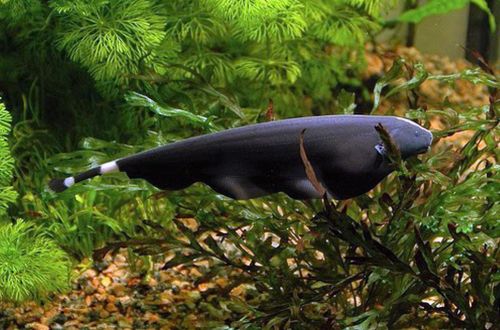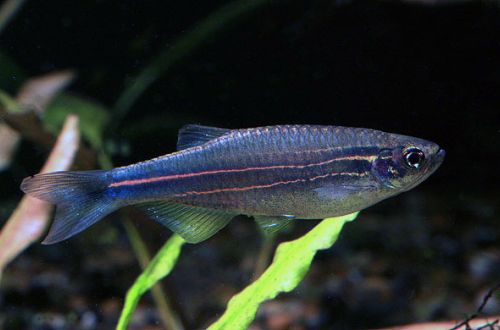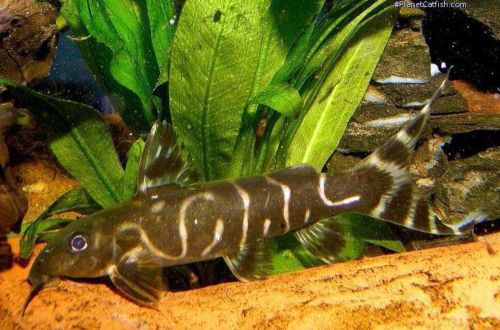
Black knifefish
The black knifefish or Black Knifefish, scientific name Apteronotus albifrons, belongs to the family Apteronotidae (Apteronotidae). Another common name is the Black Ghost fish. There is an opinion that some tribes in the Amazon believe in the resettlement of the souls of their dead in these fish. However, the information is not verified and may be just a fictional story to fuel the interest of aquarists in this fish.

Contents
Habitat
Come from South America. They are found almost throughout the Amazon basin. Prefer regions with slow currents, sandy substrates and plenty of cover. During the rainy season, they swim in the flooded areas of the forest. The fish is nocturnal, and during the day it stays in places where the sun’s rays do not fall.
Brief information:
- The volume of the aquarium – from 350 liters.
- Temperature – 23-28°C
- Value pH — 6.5–8.0
- Water hardness – soft to medium hard (5-19 dGH)
- Substrate type – fine gravel
- Lighting – subdued, dim
- Brackish water – no
- Water movement – light or moderate
- The size of the fish is 50 cm.
- Nutrition – live and frozen food
- Temperament – conditionally peaceful
- Keeping solitary in company with other species
- Lifespan up to 15 years
Description
Adults reach a length of up to 50 cm. A characteristic feature is the shape of the body, resembling the blade of a knife or lancet. In the process of evolution, the tail turned into a vestigial organ. The anal fin, which extends from head to tail, is responsible for movement. Thanks to him, the fish can move forward and backward with equal ease. The color is black, at the tip of the tail there are two white “rings”.
The fish has poor eyesight, for orientation in space and hunting, it uses a special organ that produces a weak electric field around the body, helping to detect nearby objects
Food
Carnivorous species, in nature feeds on worms, aquatic insects and their larvae, small fish. In a home aquarium, you can serve fresh or frozen foods such as earthworms, bloodworms, brine shrimp, pieces of mussels and shrimp. If available, they will not refuse live fish.
It is noted that the Black Knifefish is able to remember its owner over time and take food directly from the hands. It is important that the hands are clean, do not contain traces of soap, creams.
Maintenance and care, arrangement of the aquarium
One adult fish will require an aquarium of at least 300 liters. The design should resemble natural environments with dim lighting and plenty of cover. It is recommended to use a fine gravel substrate, smooth stones, thickets of plants, including floating ones, as well as various driftwood and other objects that can serve as a shelter.
Successful keeping largely depends on maintaining stable water conditions with suitable pH and dGH values. In addition to a powerful filtration system, some aquarists purchase ultraviolet sterilizers as a means of controlling pathogens. Mandatory procedures for the care of the aquarium are a weekly change of part of the water by 30-50% and regular cleaning of the soil from organic waste.
Behavior and Compatibility
Peaceful shy fish in relation to other neighbors in the aquarium. But it is worth remembering that this is still a carnivorous species, so very small fish can become their accidental victims. Within a species, the situation is different. The black knifefish is very aggressive towards its relatives, which does not allow them to be kept in a group.
Reproduction / Breeding
At the time of this writing, there have been no successful cases of breeding Black Knifefish in a home aquarium. On a commercial basis, they are bred in Southeast Asia, but suppliers prefer not to share details, so there is no reliable information.
Fish diseases
Fish grown in artificial are considered more hardy than their relatives caught from the wild. Under favorable conditions, neither one nor the other will experience health problems. Conversely, with improper care, the risks of a particular disease increase. In the first fish, the boundaries of the optimal content range are somewhat higher. Read more about symptoms and treatments in the Aquarium Fish Diseases section.





